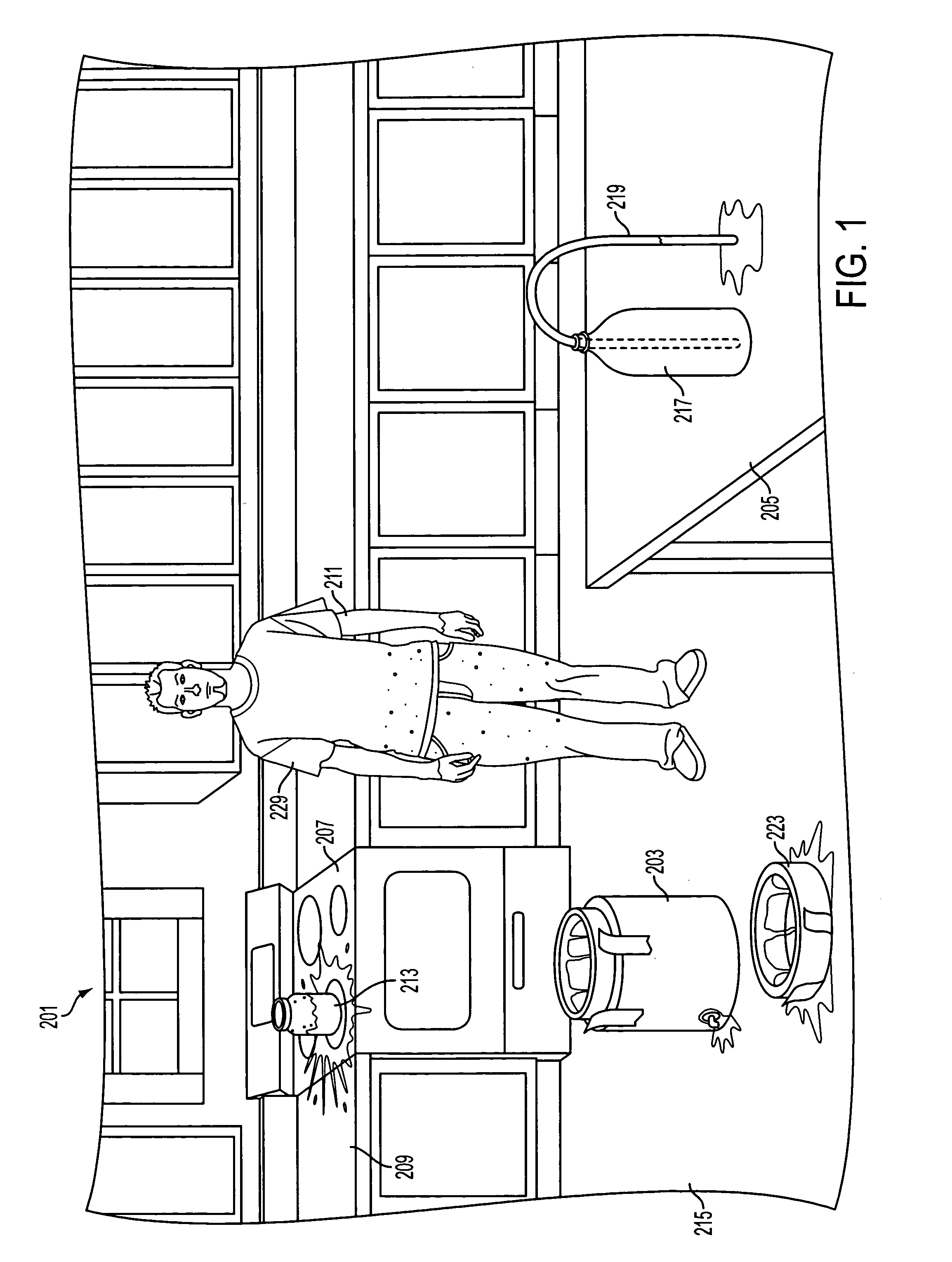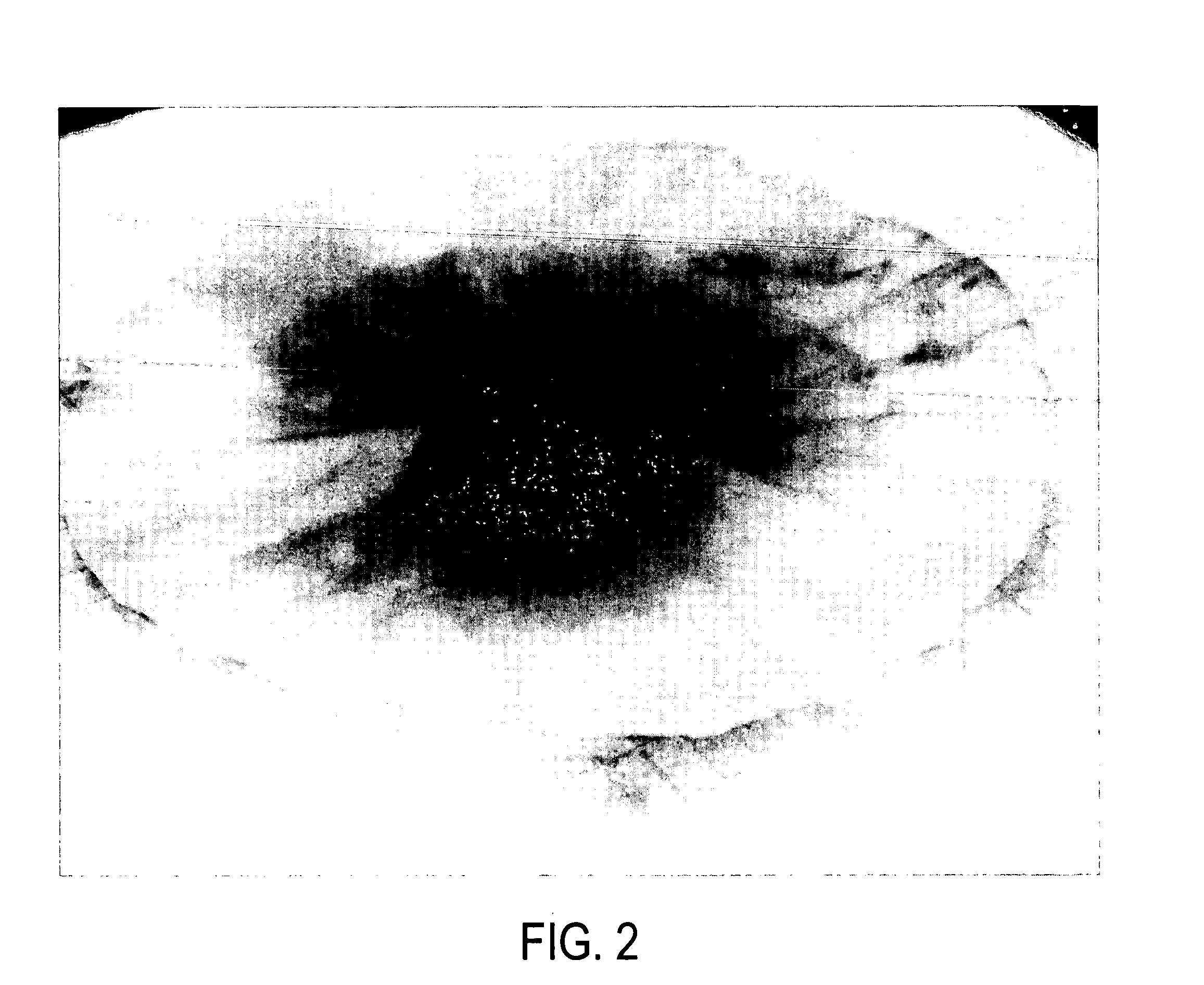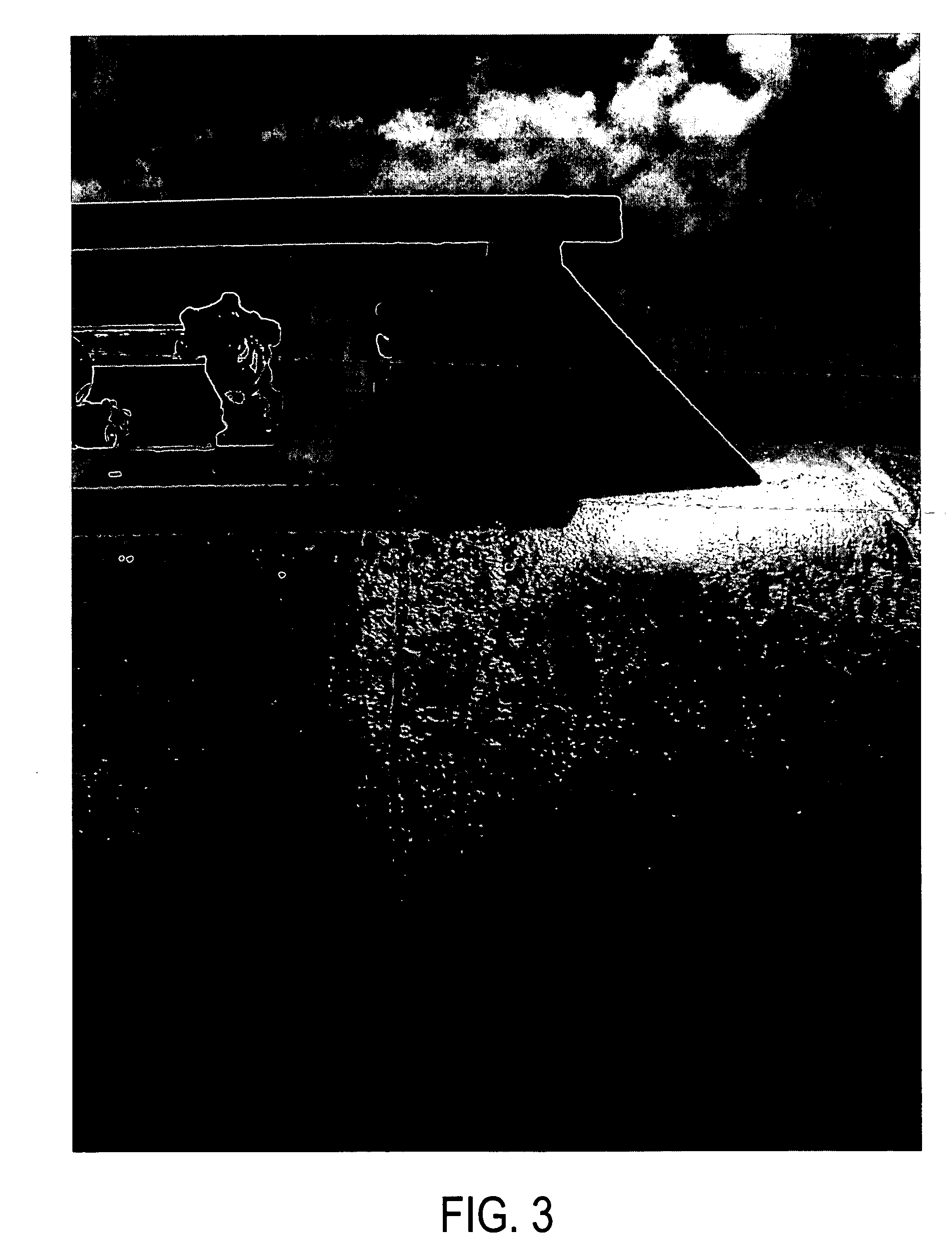Dye solutions for use in methods to detect the prior evaporation of anhydrous ammonia and the production of illicit drugs
a technology of anhydrous ammonia and dye solutions, applied in the direction of fluorescence/phosphorescence, instruments, other chemical processes, etc., can solve the problems of methamphetamine use and production, methamphetamine use has negative toxic effects on the body, and use of methamphetamine is an illegal activity affecting many aspects
- Summary
- Abstract
- Description
- Claims
- Application Information
AI Technical Summary
Benefits of technology
Problems solved by technology
Method used
Image
Examples
first embodiment
In a first embodiment, the compositions, systems, and methods relate to chemicals, specifically dyes, which may be placed in ammonia or can be added to (such as by surface spraying) ammonia precursors or products (such as solid ammonium nitrate) and which are non-volatile, such that the dyes will remain on contacted surfaces during boiling, evaporation, or sublimation of ammonia, its precursors, or products, and will stain those surfaces. It is preferable that the dye stain the objects present during, and the products of, the production, transportation, containment, or use of ammonia where such steps result in uncontrolled boiling or evaporation of ammonia.
While a plethora of dyes may be used in detecting the evaporation or boiling of liquid ammonia, it is preferred that the dye have certain characteristics. The dye is preferably soluble in liquid ammonia. The dye preferably does not react with ammonia in a way that degrades the dye, or at least its ability to stain. The dye prefer...
example 1
In a controlled laboratory setting, 12 microliters of the commercial product marketed as “KeyAcid™ Rhodamine WT” and manufactured by Keystone Analine Corporation of Chicago, Ill., which is a 21.2% w / w solution of rhodamine WT in water, and 300 mL of anhydrous ammonia were combined in a flask. This is approximately equivalent to 2 oz of KeyAcid™ Rhodamine WT in one ton of liquid anhydrous ammonia. The mixture was stirred until a solution formed that had a very slight yellow tint. The solvation of rhodamine WT in ammonia transformed the rhodamine WT into a nearly colorless composition. The surface of each piece of equipment used in this process, however, was visibly stained a light pink in areas exposed to the ammonia and from which the ammonia had evaporated. The solution was also purposefully put in contact with various additional equipment and materials, including metal screwdriver heads, concrete, and paper. All exposed equipment and materials were visibly stained pink upon evapo...
example 2
A researcher's living human skin was exposed to a small amount of a solution of rhodamine WT and was visibly stained pink. The skin was then repeatedly washed until the dye was no longer visible to the unaided human eye. The skin was then observed under irradiation by a hand-held UV light which showed the originally stained area still indicated by fluorescence. Fluorescence was still visible on the skin two weeks later when exposed to UV light after normal activity and washing by the researcher. When a more concentrated solution of the dye was used in a similar fashion, fluorescence was still visible 4-6 weeks after exposure.
PUM
| Property | Measurement | Unit |
|---|---|---|
| Fraction | aaaaa | aaaaa |
| Weight | aaaaa | aaaaa |
| Pressure | aaaaa | aaaaa |
Abstract
Description
Claims
Application Information
 Login to View More
Login to View More - R&D
- Intellectual Property
- Life Sciences
- Materials
- Tech Scout
- Unparalleled Data Quality
- Higher Quality Content
- 60% Fewer Hallucinations
Browse by: Latest US Patents, China's latest patents, Technical Efficacy Thesaurus, Application Domain, Technology Topic, Popular Technical Reports.
© 2025 PatSnap. All rights reserved.Legal|Privacy policy|Modern Slavery Act Transparency Statement|Sitemap|About US| Contact US: help@patsnap.com



